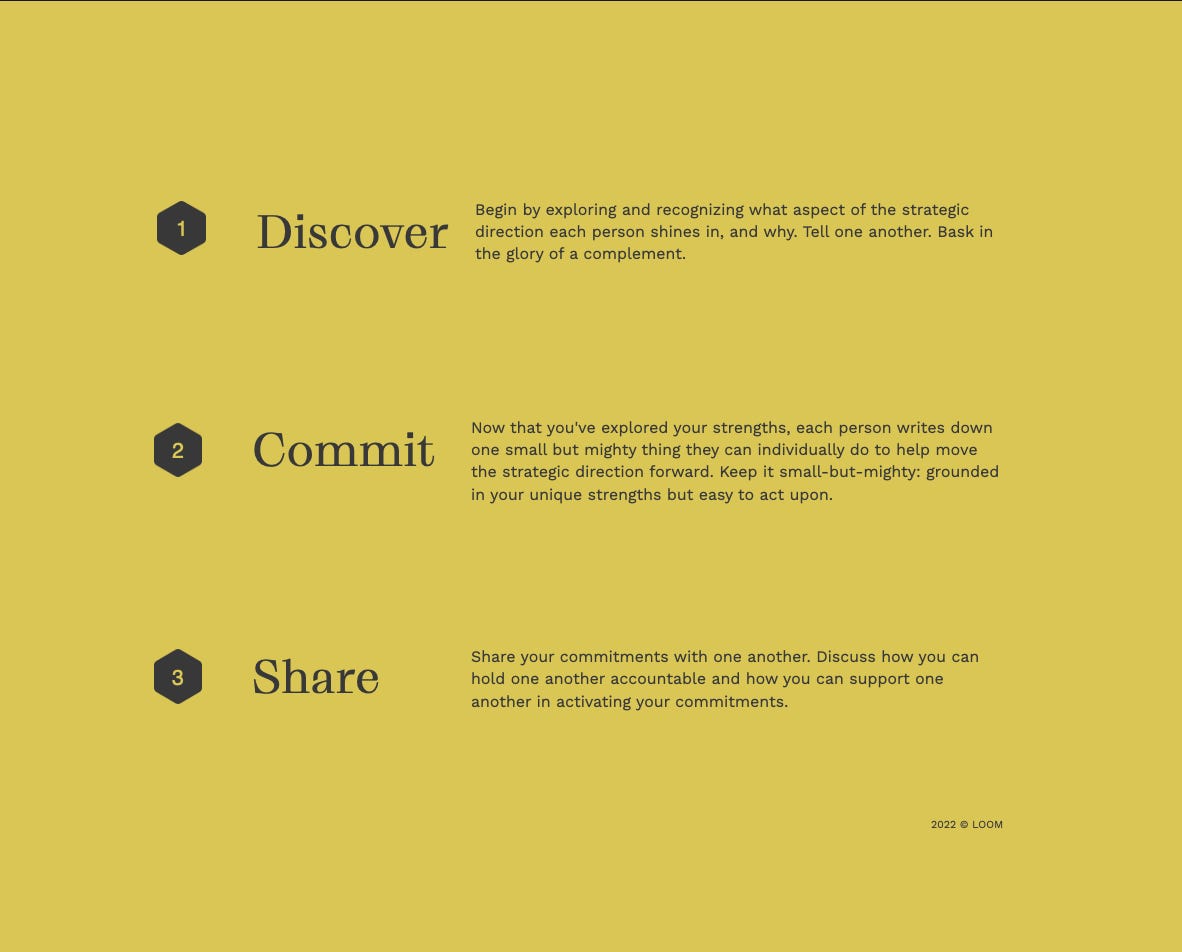I’m going to start with a cliche: We’ve all been there. Months spent on a new initiative. The research analyzed. Insights shared. Strategy cultivated, ideas sparked, decks made (not to mention Miro and Figma boards), the roadshow came and went.
Everyone seems bought in, the CEO is excited about the new direction, strategic planning for the next year is taking all your hard efforts into consideration. And yet… nothing seems to be… changing. What is going on here?
I’m ashamed to admit I led strategic initiatives for far too long before I confronted this challenge. I know I’m not the only guilty party. But why does strategy so often ignore the need to support organizations through change?
Three barriers to beginning
First, strategy often asks for big, wholesale change. It suggests a bold pivot from the present. This in itself *is not a bad thing*! However, adopting such transformational change requires risk and bravery from people: From the leaders who co-sign on the new direction, as well as the employees responsible for activating it.
Second, it’s quite often not clear where to begin. Strategy often places focus on painting a picture of who the company aspires to become. And while a clear picture of the end game offers confidence and inspiration, it pays no attention to first steps forward.
Third and perhaps more insidious, strategy often reveres the burning platform. In effort to deliver clarity and conviction, strategy can inadvertently glamorize dramatic change while diminishing the value of the first, small steps forward. We need to celebrate the small steps, making them appealing and motivating for people to invest their time and energy in.
A simple practice: A small-but-mighty thing
In response to these challenges, we’ve developed a few practices to help teams begin to act on a new strategic direction. Since big change can sometimes just feel overwhelming, we’ve tried to keep this practice refreshingly simple.
The summary below will give you a sense for how this activity works, or feel free to copy this Miro board built to guide your team through.
This activity can be done virtually or in-person, as part of an existing meeting or in a focused session. It takes teams about 30 minutes to complete. Begin by gathering your team. Break into small groups of individuals who work together and know one another.
The first portion is all about internalizing the new strategic direction while simultaneously boosting one another’s confidence. In the first part of this activity, team members are going to recognize one another’s strengths as they relate to the strategic direction. This is all about letting your colleagues know exactly where and how you see them as pivotal in activating the strategy. If your strategy includes values or guiding principles, it can be useful to link strengths with these. (We like guiding principles as they tend to be more actionable than values, but that’s a different post).
Next, individuals are asked to translate all that positive feedback into a commitment. But not an outlandish goal that will be challenging to realize. Rather, team members should focus on identifying one “small-but-mighty thing” they can do to bring the new strategic direction to bear.
Small-but-mighty things take on two characteristics:
They are small! They don’t require one person to do all the lifting, but rather embrace the power that comes when everyone on a team is doing one small thing.
They leverage strengths, leaning into what a person is already incredible at.
Individuals share their small-but-mighty things with others in their group. As each person shares, the group is encouraged to discuss how they can hold one another accountable and how they can support one another in delivering upon their commitments.
Finally, everyone places their small-but-mighty commitment in a virtual or physical shared space (think whiteboard or Miro board). This small but powerful act enables teams to see how their collective strengths can come together to create small but meaningful steps towards change.
Teams who have followed the small-but-mighty practice report gaining clarity in how they can move a new direction forward, a better understanding of their colleagues, and a much-appreciated confidence boost during times of change – all critical to moving strategy off the page and into action.
If you try out any aspects of the small-but-mighty thing practice, please let us know how it went for you.
Special thanks to Ashleigh Penrod who helped Loom perfect this practice for our clients.




